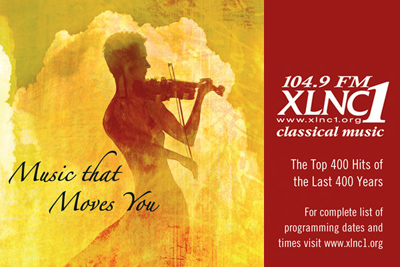
| |
Volume 3, Number 82 |
|
"There's a Jewish story everywhere" |
|
Today's Postings:
Tuesday, April 7, 2009
{Click on a link to jump to the corresponding story. Or, you may scroll leisurely through our report}
|
INTERNATIONAL
Fear of dissent among Jews is a form of enslavement... by Rabbi Dow Marmur in Jerusalem
A radio discussion this Monday morning in anticipation of Pesach: a woman suggested that Israelis are still enslaved because Tel Aviv University recently provided a platform for an Islamist to express strong anti-Zionist views. Had we been truly free we wouldn’t allow him to speak. A man disagreed: precisely because we’re no longer slaves in Egypt but at home in our own country, we can afford to allow even extremists to express their views. We mustn’t treat dissenters in the way the Egyptians treated us. READ MORE
Jordan Valley sites testify to Israel's biblical footing ... by Amir Gilat, PhD in Haifa
"The 'foot' structures that we found in the Jordan valley are the first sites that the People of Israel built upon entering Canaan and they testify to the biblical concept of ownership of the land with the foot," said archaeologist Prof. Adam Zertal of the University of Haifa ... READ MORE
The Jews Down Under...a roundup of Australian Jewish news by Garry Fabian in Melbourne
Pesach hits Australian capital READ MORE
Mayors mark Pesach's approach READ MORE
Challa's one, Tax Office nil READ MORE
Brisbane remembers Shoa READ MORE
JUDAISM
Modern hopes told in new L'shana Habah B'rushalayim ... by Cantor Sheldon Merel in San Diego, with audio recording
The text, L’shana Ha-bah B’ru-sha-la-yim, Next year in Jerusalem, closes the Passover Seder, and is sung with many different tunes, from wherever Jews have lived and travelled. READ MORE
LETTER TO EDITOR
Sonia Snyder's tale brings back old San Diego memories ... from Gert Thaler in La Jolla, California READ MORE
ADVENTURES IN SAN DIEGO JEWISH HISTORYOdds and Ends READ MORE
Year Book of Fund Sent to Contributors READ MORE
Hebrew Home for the Aged READ MORE
Deceased {Ida Small Alters} READ MORE
Young Jewish Couples Club READ MORE
Young People’s League READ MORE
Jewish War Veterans READ MORE
Beth Israel Sisterhood READ MORE
Cottage of Israel READ MORE
JEWISH INTERNET FAVORITES
We continue our examination of Jewish entertainers
Anne Meara is interviewed about movie "Fired" along with husband Jerry Stiller and writer/director Anabell Gurwitch VIEW VIDEO
Walter Matthau agonizes in the back seat of a slow car in "The Odd Couple."VIEW VIDEO
Go to top of right column
|
|
Warren Mitchell as Willie Loman in "Death of a Salesman" VIEW VIDEO
William H. Macy does a ukelele promo for his appearance in "Wild Hogs," poking fun at fellow actors VIEW VIDEO
STAFF BOX
NO EDITION ON THURSDAY—In observance of Pesach, San Diego Jewish World will not publish on Thursday, but will return on Friday. Those of you who are fans of "Thursdays with the Songs of Hal Wingard" need not worry. We will run that feature in Wednesday's edition.
TODAY'S ADVERTISERS
America's Vacation Center
Anti-Defamation League
Balloon Utopia
Carol Ann Goldstein
Congregation Beth Israel
Jewish Family Service
Lawrence Family JCC
San Diego Community Colleges
San Diego Jewish Chamber
Seacrest Village Retirement Communities
Soille San Diego Hebrew Day School
Tifereth Israel Synagogue
United Jewish Federation
XLNC-1 Radio
DEDICATIONS
Each day's issue may be dedicated by readers—or by the publisher—in other people's honor or memory. Past dedications may be found at the bottom of the index for the "Adventures in San Diego Jewish History" page.
NOTE
PLEASE HELP US POLICE THIS SITE: If you see anything on this site that obviously is not in keeping with our mission of providing Jewish news and commentary, please message us at editor@sandiegojewishworld.com, so that we can fix the probem. Unfortunately, large sites like ours can be subjected to tampering by outsiders. Thank you!
EMAIL HEADLINE SERVICE
|
|
|



FROM THE SIDELINES
Fear of dissent among Jews is a form of enslavement
|
By Rabbi Dow Marmur
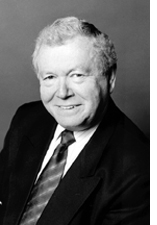 JERUSALEM—A radio discussion this Monday morning in anticipation of Pesach: a woman suggested that Israelis are still enslaved because Tel Aviv University recently provided a platform for an Islamist to express strong anti-Zionist views. Had we been truly free we wouldn’t allow him to speak. A man disagreed: precisely because we’re no longer slaves in Egypt but at home in our own country, we can afford to allow even extremists to express their views. We mustn’t treat dissenters in the way the Egyptians treated us. JERUSALEM—A radio discussion this Monday morning in anticipation of Pesach: a woman suggested that Israelis are still enslaved because Tel Aviv University recently provided a platform for an Islamist to express strong anti-Zionist views. Had we been truly free we wouldn’t allow him to speak. A man disagreed: precisely because we’re no longer slaves in Egypt but at home in our own country, we can afford to allow even extremists to express their views. We mustn’t treat dissenters in the way the Egyptians treated us.
Let this little in itself unimportant exchange serve as an illustration of the differences in Israel and elsewhere in the Jewish world about how to relate to those who’re against us. Though the exchange took place on Israeli radio, one could perhaps read into it a difference between attitudes in the diaspora and in Israel.
Criticism thrives in Israel. Here, it seems, even very extreme views are being expressed in public and rarely are the speakers and writers accused of disloyalty or of endangering the existence of the Jewish state. Many, like the radio voice cited above, see it as evidence of freedom and sovereignty. Only in Israel can you be truly critical of it.
Similar views distress most Jews in the diaspora. They fear that non-Jews will use the arguments to discredit the Jewish people and de-legitimize the Jewish state. Jews who express critical views are often in danger of being described as self-haters and renegades. You can hear this also in Israel, but it’s a much more common discourse in the diaspora.
So who’s still a slave in Egypt? Those who tolerate, perhaps even encourage, dissent, or those who protect the honor and integrity of Judaism in general and Zionism in particular by making sure that only “legitimate” views are expressed? I believe it’s the latter. Fear of criticism may suggest an inability to leave Egypt, despite the trappings of integration. On the other hand, those who, in Ben Gurion’s oft-quoted phrase, don’t care as much about what Gentiles say as about what Jews do seem to have been liberated.
One of many ways in which the difference manifests itself is in the constant complaint in diaspora communities that Israel’s PR is inadequate. If we could only explain to the world what Israel is about, it’ll understand and appreciate us. It’s ineptitude that causes us the problems. Israelis, on the other hand, often maintain that no amount of “explanation” is going to change the attitude of our enemies, because they really want us back in Egyptian slavery. Arguments won’t dissuade them, self-confidence will.
Hence the division in evaluating modern anti-Semitism. Many Jews, particularly in the diaspora, tend to believe that with tact, discretion and explanation anti-Semitism can be eradicated; that Pharaoh, as it were, can be made to see the light and accept the Israelites as equals. Israelis, on the other hand, know that Pharaoh won’t change and that the only way to defeat him is to get out of his clutches. When that happens, you can even allow his spokespeople have a say, however vile their words, because it won’t affect us.
|
|
One translation of the Hebrew for “Egypt,” Mitzraim, is “the narrow place.” Not being at home is to be in straits. Only there, what others think and say matters. Israel – Yisrael – has a biblical basis that understands it as “the one who struggles with God.” It makes us into an argumentative people. But we need freedom and sovereignty, not only in relation to God but also in relation to each other. Pesach then, particularly in Israel, gains special significance: it celebrates freedom in homecoming. Chag same’ach!

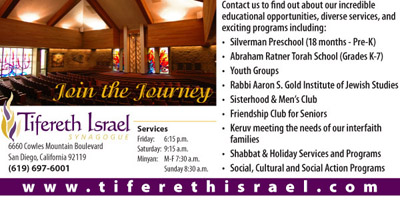

Return to top of page
|
|
|
|

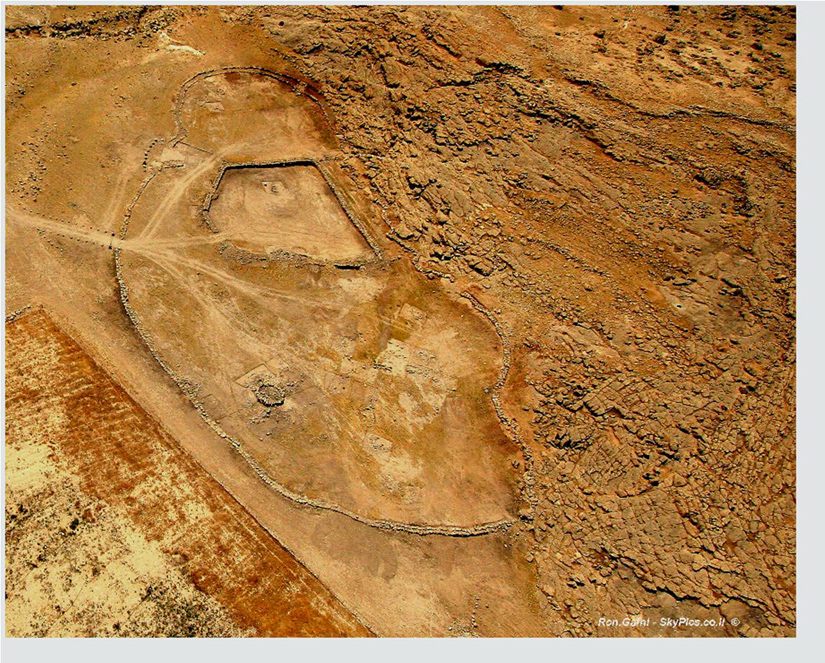
GUEST COLUMN
Jordan Valley sites testify to Israel's biblical footing
|
By Amir Gilat, PhD
HAIFA, Israel—"The 'foot' structures that we found in the Jordan valley are the first sites that the People of Israel built upon entering Canaan and they testify to the biblical concept of ownership of the land with the foot," said archaeologist Prof. Adam Zertal of the University of Haifa, who headed the excavating team that exposed five compounds in the shape of an enormous "foot," likely to have been used at that time to mark ownership of territory.
On the eve of the Passover holiday, researchers from the University of Haifa reveal an exceptional and exciting archaeological discovery that dates back to the time of the People of Israel's settlement in the country: For the first time, enclosed sites identified with the biblical sites termed in Hebrew "gilgal," which were used for assemblies, preparation for battle, and rituals, have been revealed in the Jordan valley.
The researchers, headed by Prof. Adam Zertal, exposed five such structures, each in the shape of an enormous "foot", which they suppose functioned during that period to mark ownership on the territory. "I am an archaeologist and only deal with the scientific findings, so I do not go into the additional meanings of the discovery, if there are any," Prof. Zertal said.
The Hebrew word "gilgal" (a camp or stone-structure), is mentioned thirty-nine times in the Bible. The stone enclosures were located in the Jordan valley and the hill country west of it. To this day, no archaeological site has been proposed to be identified with the gilgal. Between the years 1990 and 2008, during the Manasseh Hill-Country Survey that covers Samaria and the Jordan Valley, five such enclosures were found and excavated, all designed in the shape of a human foot. All of these sites were established at the outset of the Iron Age I (the 13th-12th centuries BCE). Based on their size and shape, it is clear that they were used for human assembly and not for animals.
Two of the sites (in Bedhat esh-Sha'ab and Yafit 3) were excavated in the years 2002-2005, under the directorship of Dr. Ben-Yosef and the guidance of Adam Zertal. The findings, mostly of clay vessels and animal bones, date their foundation to the end of the 13th century BCE, and one of them endured up to the 9th or 8th century BCE without architectonic adjustment.
In at least two cases, paved circuits, some two meters wide, were found around the structures. These were probably used to encircle the sites in a ceremony. "Ceremonial encirclement of an area in procession is an important element in the ancient Near East," Prof. Zertal says, adding that the origins of the Hebrew term "hag" (festival) in Semitic languages is from the verb "hug", which means "encircle." Thus, this discovery can also shed new light on the religious processions and the meaning of the Hebrew word for festival, "hag".
Prof. Zertal emphasized that the "foot" held much significance as a symbol of ownership of territory, control over an enemy, connection between people and land, and presence of the Deity. Some of these concepts are mentioned in ancient Egyptian literature. The Bible also has a wealth of references to the importance of the "foot" as a symbol: of
Go to top of right column
|
|
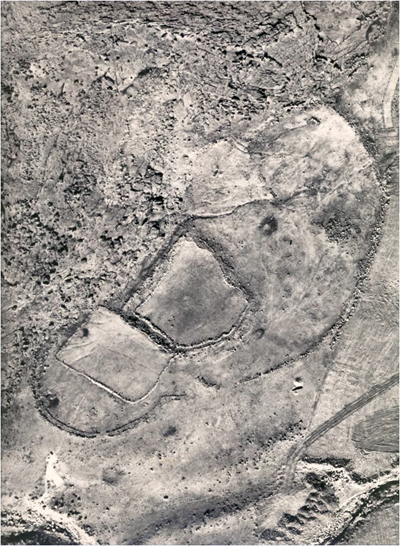
ownership over Canaan, the bond between the People of Israel and their land, the link between the People and God's promise to inherit the land, defeating the enemy 'underfoot', and the Temple imaged as a foot.
"The discovery of these 'foot' structures opens an entirely new system of linguistic and historical perceptions," Prof. Zertal emphasizes. He explains that the meaning of the biblical Hebrew word for "foot" - "regel" – is also a "festival," "holiday," and ascending to see the face of God. As such, the source of the Hebrew term "aliya la-regel," literally translated as "ascending to the foot" (and now known in English as a pilgrimage), is attributed to the "foot" sites in the Jordan valley.
"Now, following these discoveries, the meanings of the terms become clear. Identifying the 'foot' enclosures as ancient Israeli ceremonial sites leads us to a series of new possibilities to explain the beginnings of Israel, of the People of Israel's festivals and holidays," he stated.
According to Prof. Zertal, the "foot" constructions were used for ceremonial assemblies during Iron Age I (and probably after). When the religious center was moved to Jerusalem and settled there, the command of "aliya la-regel" (pilgrimage) became associated with Jerusalem. The source of the term, however, is in the sites that have now been discovered in the Jordan valley and the Altar on Mt. Ebal.
"The biblical text testifies to the antiquity of these compounds in Israel's ceremonials, and the 'foot' structures were built by an organized community that had a central leadership," Prof. Zertal stated. He stressed that there is a direct connection between the biblical ideology, which identifies ownership over the new land with the foot and hence with the shape of the constructions
Return to top of page
|
|
|
|

 The Jews Down Under ... A roundup of Australian Jewish news The Jews Down Under ... A roundup of Australian Jewish news
|
Pesach hits Australian capital
CANBERRA- The National Jewish Memorial Centre
was a hive of activity last Sunday morning as the
local Jewish community bought up big on Pesach supplies.
With no Kosher outlets in the national capital, the ACT Jewish Community brings in a range of Pesach goods for its annual sale day. Some Jewish Canberrans also travel to Sydney or Melbourne to stock up on supplies.
National Council of Jewish Women of Australia's ACT branch also held a meeting on the same day. Audience members heard from visiting representatives of the International Christian Embassy of Jerusalem, Jesma O'Hara who spoke on Christian-Jewish dialogue and the organisation's work supporting Israel.
Mayors mark Pesach's approach
SYDNEY- About 120 mayors and councillors from
across New South Wales gathered for a local
government Pesach dinner on Wednesday, March 31.
Organised by the NSW Jewish Board of Deputies
(JBD), the mock Seder -- themed "Social Inclusion
and Community Building" -- included discussions,
rituals, music and dancing to celebrate Pesach.
NSW Local Government Minister Barbara Perry
attended and applauded the Jewish community's commitment to social justice.
"It's a remarkable tribute to the Jewish people
that the suffering endured throughout history has
been transformed into passionate commitment to
protecting these most important human rights,"
Perry told the crowd gathered at Randwick Town Hall.
Other guests included Shadow Local Government
Minister Chris Hartcher, Shires Association
president Genia McCaffery, who is also mayor of
North Sydney, and Stepan Kerkyasharian, chair of
the Community Relations Commission.
"We celebrated our lives of freedom in this great
state," said JBD CEO Vic Alhadeff.
"We did so through the prism of Jewish history,
which serves as a microcosm of the migrant
experience to Australia, and of the importance of
overcoming racism and taking our place among the
family of communities which make up this great country."
JBD has previously held Pesach dinners for the
trade unions, interfaith leaders and educators.
Challa's one, Tax Office nil
MELBOURNE - Glick's the kosher baker, has won the right to keep its famous challah GST free after the Australian Tax Office (ATO) reinstated a private ruling.
After demonstrating to the ATO that challah was a type of bread, not a brioche or pastry, tax officials agreed to keep the plaited loaves free of the 10 per cent tax.
Nathan Glick, general manager of the family-owned bakery, said the ATO initially provided a private ruling for the company, back in 2000.
"But we supply Woolworths with our challahs, and if you look at the ATO website, it says challahs are taxable and that we had a private ruling," he explained.
"So according to Woolworths, because challahs are taxable, they had to charge GST."
Woolworths contacted the ATO about the discrepancy and it decided to cancel Glick's private ruling and impose GST on all challahs.
In response, Glick engaged lawyers, and several thousand dollars later, the private ruling was reinstated.
"We were pretty confident because we know it is a bread product and bread isn't taxable," he said. "The tax office don't really know what challah is, they look at it as a brioche, which is taxable."
The case Glick's presented included an explanation from Rabbi Philip Heilbrunn about challah and the way it is used in the Jewish faith.
They also engaged the Bread Research Institute to describe how challah differs from brioche, and provided the ATO with samples of their four varieties of challah.
Go to top of right column
|
|
Last month, the ATO discovered challah was made without eggs or butter and had a different oil level to brioche.
"The report concludes that Glick's challah has a completely different texture and flavour to brioche," the ATO ruling stated.
"As such, the supply of your challah products is GST free."
Despite the cost and the months it took to get the private ruling reinstated, Glick said it was worth it.
"It is a no-brainer that challah should be a bread product, we wash on it, it is bread," he said.
"We just went into bat for our customers and the Jewish community in general."
Brisbane remembers Shoa
BRISBANE - Queenslanders will hold a special Yom Hashoah commemoration later in April.
Zvi Civins, from the Jewish Holocaust Centre in Melbourne will be the guest speaker at the community event at the Jewish cemetery.A candle lighting ceremony will take place to remember the six million Jewish deaths during the Holocaust.
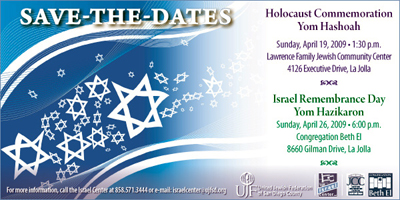
.
|
|
|

MUSIC OF OUR PEOPLE
Modern hopes told in new L'shana Habah B'rushalayim
To hear Cantor Merel, choir and orchestra perform this song, please click here
|
By Cantor Sheldon Merel
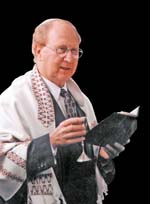 SAN DIEGO— The text, L’shana Ha-bah B’ru-sha-la-yim, Next year in Jerusalem, closes the Passover Seder, and is sung with many different tunes, from wherever Jews have lived and travelled. The reference, “ being in Jerusalem next year," reflects our historic and spiritual ties to the land of our forefathers. For some, singing about Jerusalem triggers emotional memories of visits, or hopes to visit. Even the arks holding the Torah scrolls in our synagogues are placed on the eastern wall, so that congregants always face toward Jerusalem as they pray for peace. SAN DIEGO— The text, L’shana Ha-bah B’ru-sha-la-yim, Next year in Jerusalem, closes the Passover Seder, and is sung with many different tunes, from wherever Jews have lived and travelled. The reference, “ being in Jerusalem next year," reflects our historic and spiritual ties to the land of our forefathers. For some, singing about Jerusalem triggers emotional memories of visits, or hopes to visit. Even the arks holding the Torah scrolls in our synagogues are placed on the eastern wall, so that congregants always face toward Jerusalem as they pray for peace.
The name, Jerusalem is based on the Hebrew, Ir Shalom, the city of peace . Since there is no “J” sound in Hebrew, the actual Hebrew is Y’ru-sha-la-yim. The love of Jerusalem represents an essential core of Judaism , and was dramatically inscribed centuries ago in Psalm 137,
“ If I forget thee Jerusalem, may my right hand lose its cunning. Let my tongue cleave to the roof of my mouth, if I do not remember thee, If I do not prefer Jerusalem to my chief joy. ”
Jerusalem, the most important city of the Bible, has been the focal point of Jewish religious life and aspirations ever since David made it the capital, and his son, Solomon, later built the holy Temple there. The city is located on a rock plateau 2550 feet high, which is higher than almost any other great capital in history. it is an awesome and beautiful sight as one literally ascends up to Jerusalem from the west.
The oratorio, Search for Freedom introduces contemporary lyrics and stirring music for the text. Its new words, not only expresses our love of Jerusalem, but reminds us of difficult problems facing our world. The oratorio leaps forward in time, beyond the Exodus story from Egypt to seek answers to our world problems. It presents serious questions as to how to end: war, slavery, pollution, hate, oppression of all mankind, and to “repair our world” (Tikun Olam). The search for freedom that inspired the Passover story, must continue in every generation, as expressed in this stirring rendition from Haggadah, Search for Freedom.
“Brothers and Sisters, children of God, this night is the symbol of search: the search for freedom. We ask the question, and our answers breed more, for no question is fully resolved. But the asking and the telling is a sacred work, for thus the search goes on. Oh Lord, our God, King of the world. Next year as we tell the story again, may our search for freedom have ended, and may all Thy children be free! L’sha-ah-na Ha-bah Y’ru-sha-la-yim….. Amen”.
Chag Sa-mey-ach, Happy Passover, and L’ shana Ha-ba b’ru-sha-la-yim !
Go to top of right column
|
|

|
|
|

LETTER TO THE EDITOR
Sonia Snyder's tale brings back old San Diego memories
|
Editor, San Diego Jewish World:
Sonia Snyder's sweet "kipa" story got to me. It is a simple story writtenso that any child can easily grasp it. And, I read it word for word becauseof the Sonia Snyder by-line.
You see when I looked at her picture I saw something beyond Sonia herself.It was a reflection of Sonia's mother, Rosie Weitzman, from the mid 1920s when Rosie first came to San Diego as part of a well known family and waseventually married to the man who was Sonia's and her sister's (Esther) father whose name if I recall properly was "Hymie" but I could be wrong.
Rosie was such a sweet person which she remained all her life with my mom being a sort of mentor to her. Since I often was lucky enough to be a flower girl in many weddings I think I was part of that one also. As years passed Esther and Sonia and I (both much younger than me) had become friends and Esther has distinguished herself as the leader of choral groups and in
the music world. Both women are true gentle females having become so because of the tender care given them by proud parents. They are the reminders of an early San Diego family group of Weitzman/Kushner relatives and probably the only ones who are still here. Bravo Sonia for a sweet children's story. I kept reading because although I guessed the ending I
was not sure and waited it out to find its conclusion. Hag Sameach.
Gert. Thaler
La Jolla, California
|
|

|
|
|

Adventures in San Diego Jewish History
|
Odds and Ends
Southwestern Jewish Press December 26, 1952, page 4
With this, our last issue of 1952, my thanks go to all of those who have made this one of the best years in my, up to now, rather quiet, deadline lacking life. My love and devotion to the Publicity Chairmen whose copy is always type-written and double-spaced; to those who take notice of the deadline date published on the first page of each issue; to those who list only two telephone numbers “to call for reservations;”and to those who spell sensitive souls' names correctly. My undying gratitude to our subscribers who call or write in society items—that’s a big page to fill. And a tremendous salaam to our advertisers. I love you!
More gleanings from the telephone book, obviously my favorite reading material: among the listings are Eli Ely, and B. Polite.
Proud of our Editor Dept.: Maxwell Kaufman’s Editorial of Nov. 14, “Post Election Ponderings” was quoted in its entirety in the December 18 issue of the Boston Jewish Times.
During the coming year, anyone supplying this column with an item will be awarded with a personally signed letter emblazoned with my coat of arms—a bagel rampant on a field of sour cream. B.E.S.
Year Book of Fund Sent to Contributors
Southwestern Jewish Press December 26, 1952, page 4
The 1951-52 Annual Report and Yearbook of the Federation of Jewish Agencies and the United Jewish Fund of San Diego will be in the hands of members next week, according to Nathan Schiller, Chairman of the Committee.
With “Yours Is The Helping Hand” as its theme the Report is completely different than in previous years. A 24-page 8 ½ by 11 book, it deemphasizes names and amounts, and puts its greatest emphasis on the story of Jewish Welfare in San Diego.
Profuse with pictures, its contents contains the story of the Fund; the campaign leaders; the Honor Roll; distributing the money raised; campaign highlights in pictures; Federation of Jewish Agencies and its members; Jewish Social Service; Hebrew Home for the Aged; Community Center; Community Relations; Jewish Education; Émigré Program and Presidents’ Council.
The Annual Report is a valuable source of material about local Jewish Welfare Agencies and is well worth reading.
Hebrew Home for the Aged
Southwestern Jewish Press December 26, 1952, page 5
Last month the 84th Birthday of Mr. J. Dembo was celebrated and the next birthday party will be for Mrs. Schwamm. The Auxiliary of the Home sponsors these parties, with Mrs.
Rosalie Sonnabaum and Mrs. H. Tennenbaum—co-chairmen.
A Jewish reading room for use of the entire older Jewish community is to be started under the sponsorship of the Aux. with Mrs. W. Richartz as chairman. Books, newspapers and periodicals in Yiddish will be featured and all are welcome to gather at the Home. The opening date will be announced very soon.
Mrs. Frances Berenson Tolman is writing letters for the Home again. She can be reached at T-6335.
Applications for admission to the Hebrew Home for the Aged may be made through the Jewish Welfare Society, 333 Plaza Bldg., F-1803.
Deceased {Ida Small Alters}
Southwestern Jewish Press December 26, 1952, page 5
Alters, Mrs. Ida Small, 59, on Monday, Dec. 22nd in a local hospital. Born in Russia, Mrs. Alters came to this country in 1914 and had lived in San Diego for 7 years. She was a member of the Pioneer Women and the Tifereth Israel Synagogue. Services were conducted at the Lewis Colonial Mortuary by Rabbi Monroe Levens on Wednesday, Dec. 24 at 2 p.m. Internment was at the Home of Peace Cemetery. Survivors include daughters Mrs. Charles Ransom of San Diego, and Mrs. Dorothy Kanel of Buffalo; a son, Albert Alters of Buffalo; brothers Henry Small of Altoona, and Abraham Small of New York; and four grandchildren.
Go to top of right column
|
|
Young Jewish Couples Club
Southwestern Jewish Press, December 26, 1952, page 5
Members of the Young Jewish Couples Club are working furtively to add those last finishing touches to the plans for their big, gala New Year’s Eve Party at the Vasa Club House.
The spacious Vasa Club dance hall will be decked with yards of colorful garlands and galaxies of gaily swaying balloons.
True to the real New Year’s Eve tradition, there will be hats and noisemakers galore. Guests will dance to the melodious rhythm of the Six Tones and enjoy the entertaining renditions of the orchestra vocalist.
A midnight spaghetti dinner is being planned. Drinks will be served throughout the evening.
Reservations may still be made by calling Sandy Alter, R-1681; Herman Hornstein, T. 1-9420; or Bernard Barber, J-2780. Tickets are $10.00 per couple. Food and drinks are included in the price.
For further details about this affair watch your daily newspapers.
Young People’s League
Southwestern Jewish Press December 26, 1952, page 5
“Biggest event of the Y.P.L. year,” says Cece Oglesby concerning the super forthcoming weekend in the snow, Jan. 30-Feb 1 at Camp Cuyamaca—price $7.50 (this includes everything). Dave Levens, chairman of the camp committee, reports that there will be plenty of transportation and that several parents have very graciously agreed to accompany the expedition.
The next meeting will be Jan. 4, where detailed info on the camping trip will be given.
Sigmund Urbach, committee chairman, announces that the Young Peoples League installation of officers will be held soon at Tifereth Israel Synagogue.
Jewish War Veterans
Southwestern Jewish Press, December 26, 1952, page 5
A gala New Year’s Eve dance will be held at the Veterans War Memorial Bldg., Balboa Park. Dancing from 8 to 2 to a fine orchestra, plus entertainment. Funds raised will be used for the tubercular ward at the Naval Hospital. Tickets can be obtained by calling W. 7-0867 and F-8513.
A business meeting will be held January 5 to formulate plans for 1953.
Beth Israel Sisterhood
Southwestern Jewish Press December 26, 1952, page 5
Temple Beth Israel Sisterhood will hold a “Turn-About” luncheon meeting on Monday, December 29th at 11:45 a.m. in the Temple Center. Children of Sisterhood members will take charge of the program; small-fry (ten years and under) will be entertained with a full length movie. Members will exchange 25 cent Chanukah gifts. For reservations, phone Mrs. John Ruskin, Mrs. J. Alweis.
January 8 there will be a special 11:45 a.m. luncheon for all young matrons of Temple Beth Israel in the home of Mrs. M.M. Ackerman, 5269 Canterbury Drive. They are invited to form a committee to formulate plans for two new Sisterhood projects.
Cottage of Israel
Southwestern Jewish Press, December 26, 1952, page 5
Following our custom of having special holiday displays, visitors to the Cottage during the recent Chanukah season were treated to a Cottage bedecked with all the symbols and spirit of this joyous holiday.
New fixtures to better house our collections and to provide displays for showing the continuous economic and cultural development of Israel are being made. When all our plans are completed we hope to have a special open house and invite all members to view these displays as well as the new murals being especially painted for us by artist Gail Benzinger Evans.
Both our delegates to the House of Pacific Relations, Mr. Isaac Poltere and Mrs. Wm. Schwartz, have been on the sick list and we hope they will be with us again very shortly.
|
|
|
Return to top

Jewish Internet Favorites ... featuring notable Jewish community members*
|
< BACK TO TOP
|

![]()
![]()
![]()
 JERUSALEM—A radio discussion this Monday morning in anticipation of Pesach: a woman suggested that Israelis are still enslaved because Tel Aviv University recently provided a platform for an Islamist to express strong anti-Zionist views. Had we been truly free we wouldn’t allow him to speak. A man disagreed: precisely because we’re no longer slaves in Egypt but at home in our own country, we can afford to allow even extremists to express their views. We mustn’t treat dissenters in the way the Egyptians treated us.
JERUSALEM—A radio discussion this Monday morning in anticipation of Pesach: a woman suggested that Israelis are still enslaved because Tel Aviv University recently provided a platform for an Islamist to express strong anti-Zionist views. Had we been truly free we wouldn’t allow him to speak. A man disagreed: precisely because we’re no longer slaves in Egypt but at home in our own country, we can afford to allow even extremists to express their views. We mustn’t treat dissenters in the way the Egyptians treated us.








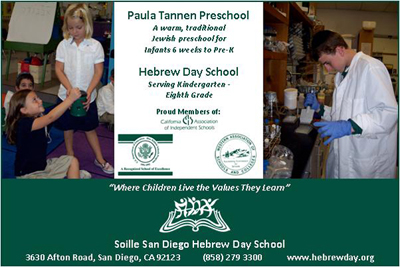
 SAN DIEGO— The text, L’shana Ha-bah B’ru-sha-la-yim, Next year in Jerusalem, closes the Passover Seder, and is sung with many different tunes, from wherever Jews have lived and travelled. The reference, “ being in Jerusalem next year," reflects our historic and spiritual ties to the land of our forefathers. For some, singing about Jerusalem triggers emotional memories of visits, or hopes to visit. Even the arks holding the Torah scrolls in our synagogues are placed on the eastern wall, so that congregants always face toward Jerusalem as they pray for peace.
SAN DIEGO— The text, L’shana Ha-bah B’ru-sha-la-yim, Next year in Jerusalem, closes the Passover Seder, and is sung with many different tunes, from wherever Jews have lived and travelled. The reference, “ being in Jerusalem next year," reflects our historic and spiritual ties to the land of our forefathers. For some, singing about Jerusalem triggers emotional memories of visits, or hopes to visit. Even the arks holding the Torah scrolls in our synagogues are placed on the eastern wall, so that congregants always face toward Jerusalem as they pray for peace. 




